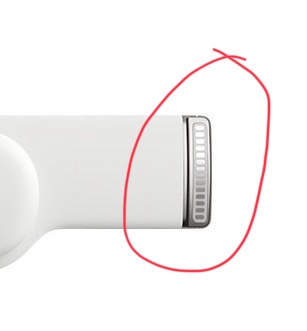

To properly answer, we need to define what we mean as “airborne” which has gotten a bunch of people very upset recently. Prior to the COVID pandemic, the transmission model for respiratory viruses focussed on 3 distinct models of transmission:
- Fomites are collections of excretions on surfaces containing live virus. An infectious person cough into their hand, pick their nose, or similar, then touch the doorknob. The next person touches the doorknob, then their mucus membrane (nose, eye, mouth) and they get infected.
- Droplets are large collections of excretions that are transmitted during talking, shouting, singing, coughing, or sneezing. They are ballistically expelled, but don’t remain in the air. An infected person expels these droplets, and must be in range of another person who is struck by these droplets in their mucus membranes to be infected.
- Finally, airborne transmission occurs when micro droplets small enough to ride on air currents are expelled from infected people, and non infected people inhale them into their airways.
COVID was presumed to only be transmitted through the first 2 methods. But weird things were observed, where transmission occurred when people (or ferret model experiments) were separated by barriers through which ballistic droplets couldn’t pass, like air ducts with multiple 90° bends. People also got sick after being in rooms many minutes after infected people had been present, long after ballistic droplets would have harmlessly fallen to the ground.
In reality, droplet models were just close range transmission, and airborne long range transmission of bio-aerosols, or micro droplets created from breathing, shouting, singing, coughing, or sneezing. The range was more a function of the transmissibility of the virus. Highly infective things can infect at low doses at long range. Less infective things occur with much higher doses, when people are quite close to one another. This folded in the prior models quite nicely. It was, however, not well accepted.
If a disease is to be transmitted by bio-aerosols, the disease vector needs to be able to enter the body through the surfaces with which it will interact upon being “breathed in”. This doesn’t work well for the STI viruses or bacteria, nor the malarial parasite, as they aren’t actively expelled in the respiratory system, so don’t generate bio-aerosols, and require access to highly specific host cells not easily accessed through the respiratory system at the necessary volumes to create an infection.
So, no, not really possible for non-respiratory viruses to become “airborne” in that sense.there would need to be a LOT of intermediate steps.
But diseases that we used to consider to be transmitted by the now defunct ballistic droplet model can become “airborne” (instead of “droplet”) if their ability to infect a subject becomes more successful at lower doses of pathogen such that it can occur at longer range, and over longer times.









Most answers here are missing the benefits of a home Mac running 24/7 if you’re already part of the Apple ecosystem. For example, you can have it sync all your iCloud data (documents, photos, iTunes content) and back them up locally, then elsewhere outside of Apple’s ecosystem. You can also have it act as a local CDN for OS updates, whereby it will cache OS downloads locally so any subsequent updates will be super quick.
On the downside, I found native Docker on macOS kinda sucked, and just installed Ubuntu on my 2012 Mac Mini (now running Proxmox for funsies), but I have an old iMac to do the caching. You could probably virtualize and get both benefits, and I am considering moving to a new M4 mini for the power savings and sheer speed. That M4 Pro chip has absolutely incredible Geekbench numbers while sipping power.